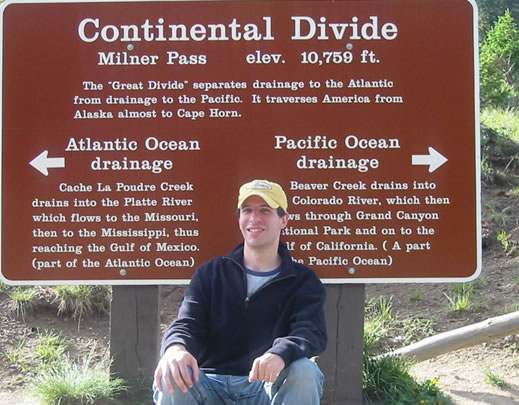Crossing Over the Continental Divide
Now that the Corps had acquired horses and supplies, from the Shoshone, they could begin the difficult task of trekking over cliffs and mountains. As expected, the trip was treacherous. The horses were in constant danger of slipping on the narrow routes atop tall cliffs. There were virtually no animals to hunt, and the expedition ran out of salt pork on September 3rd. During their trip through the mountains, the Corps would cross over the Continental Divide, the point at which river and streams flow westward toward the Pacific. Once they could get back on the water, their trip to the Pacific Ocean would be easier because they'd be sailing with the current. Eventually, the Corps made it to the valley of the Bitterroots, where they were able to trade for more horses with the Nez Perce Indians before attempting to cross the Bitterroots. On September 10, the Corps rested at a location known as Traveler's Rest, where they collected badly needed game as well as three Nez Perce natives who agreed to guide them over the Bitterroots.
Brutal Conditions Lead to Desperate Times
Unfortunately for the Corps of Discovery, two guides abandoned them. The guide that remained with them, called Old Toby, attempted to lead the Corps through the Bitterroots via the Nez Perce Trail but became confused and disoriented. In the meantime, rain, hail, and as much as eight inches of snow fell upon the travelers. On September 17, several starving horses strayed from the camp. It took all morning to round them up. The men too were starving and near the limits of their physical endurance. The Corps resorted to eating the horses – but soon there were no more horses to eat. William Clark and several hunters were sent ahead to the plains in the hopes of finding game to send back to the main camp. After four days, one of the hunters returned to the main camp with fish and dried roots obtained by Clark from the Nez Perce Indians. That evening Clark and the rest of the hunters returned to camp.
Clark Returns
Clark returned with vital information. He had met a Nez Perce chief named Twisted Hair who described the waterways that led to the falls of the Columbia River (the river the Corps knew led to the Pacific). The chief told Clark it was a ten day trip from his village to the destination. Twisted Hair also showed Clark how to make canoes more efficiently and agreed to watch the horses until they returned the following spring.
Did You Know? |

The Continental Divide is an invisible divide that runs through the Rocky Mountains. Precipitation that falls east of the divide theoretically ends up in the Atlantic Ocean, while precipitaiton that walls west of the divide ends up in the Pacfiic Ocean. Here is a picture of me on the Continental Divide in Colorado. |